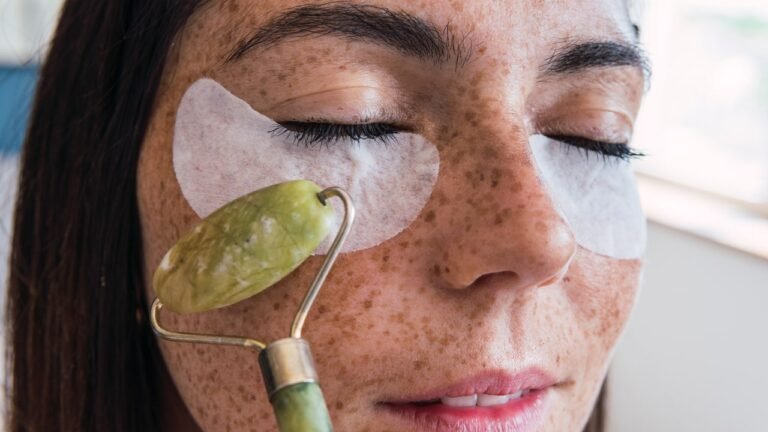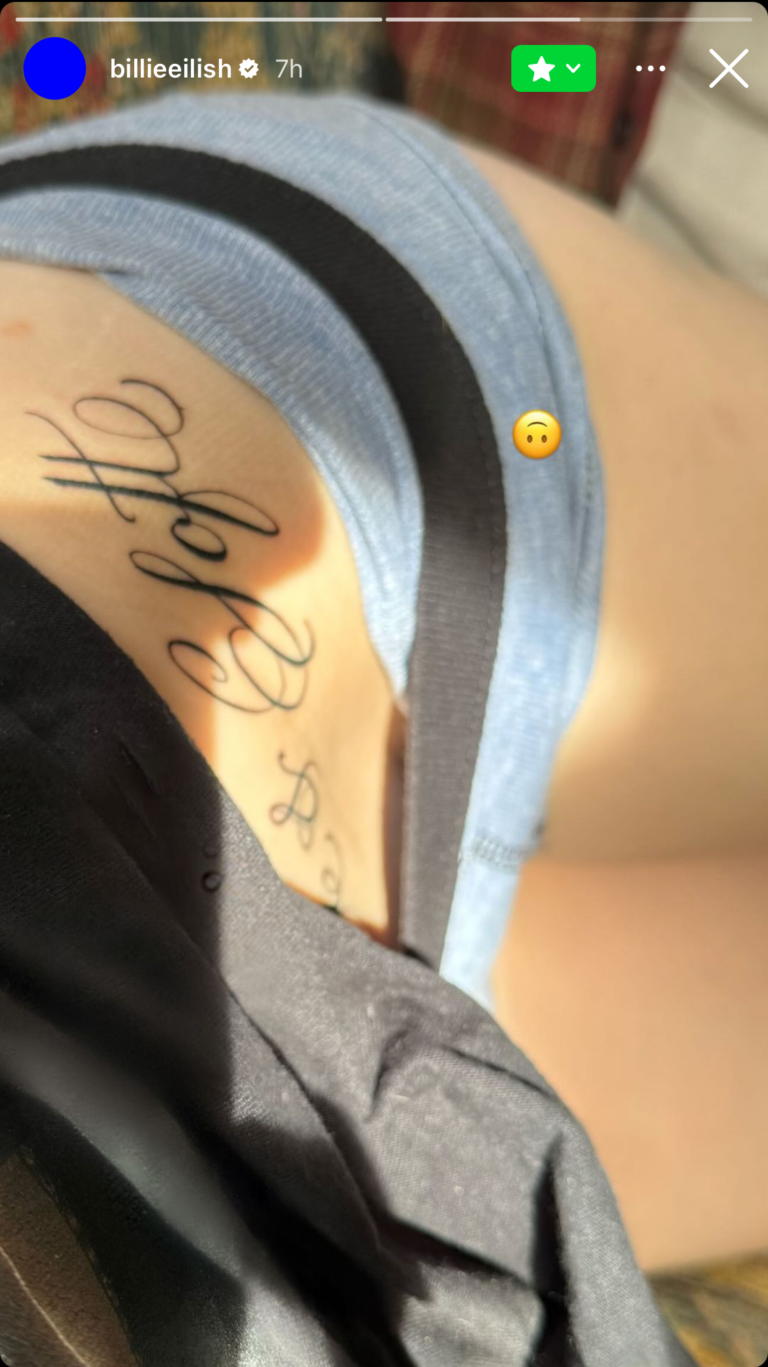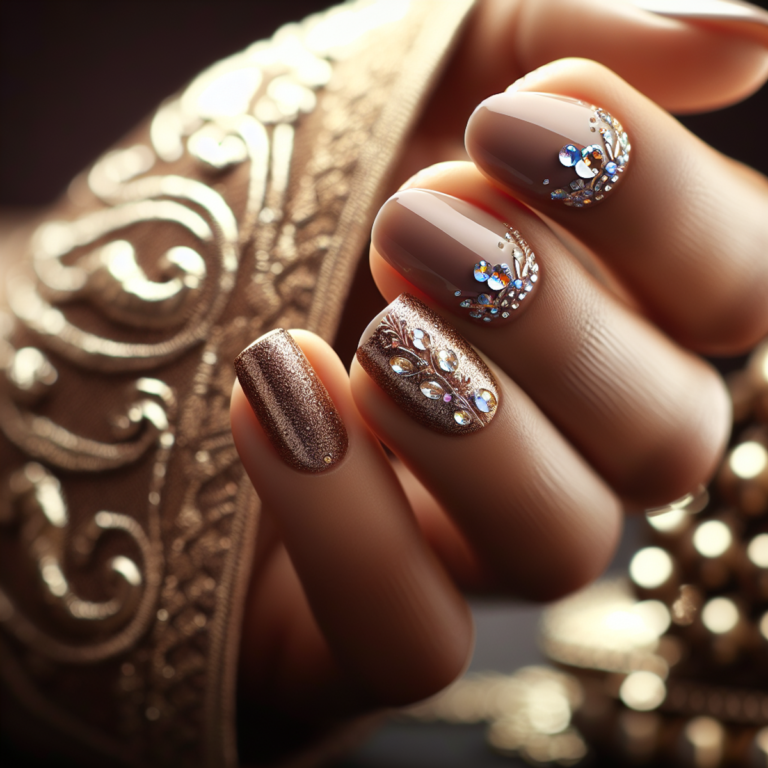How to Safely Remove Nail Glue — Plus, the Best Nail Glues for Press-Ons

Introduction
Nail glue is a strong adhesive that is commonly used for press-on nails. It creates a powerful bond that keeps your press-ons securely in place, allowing you to have professional-looking manicures at home. However, it’s important to know how to remove nail glue safely in order to avoid any harm to your natural nails.
In this article, we will show you how to safely remove nail glue from your nails. We will give you step-by-step instructions that are easy to follow and ensure a gentle yet effective removal process. We will also recommend some of the top nail glues for press-ons that you can find in stores or online, so you can choose the best one for your needs.
Removing nail glue may require some patience and care, but with the right methods and products, you can achieve beautiful nails without causing any damage. Our expert tips will teach you how to remove nail glue safely while keeping your natural nails healthy.
Let’s start by discussing the process of removing nail glue in detail and then we’ll introduce you to the best nail glues for press-ons that will enhance your manicure experience.
Safely Removing Nail Glue: A Step-by-Step Guide
Nail glue is a popular adhesive used for applying press-on nails. While it is effective in creating long-lasting manicures, it’s important to know how to safely remove nail glue to avoid any damage to your natural nails. In this section, we will guide you through the process of safely removing nail glue from your nails.
Step 1: Soaking the Nails in Warm Water and Oil
Soaking your nails in warm water and oil is the first step in safely removing nail glue. This method helps to loosen the adhesive properties of the glue, making it easier to remove.
Here’s a step-by-step guide on how to soak your nails effectively:
- Fill a bowl with warm water. Make sure the water is comfortably warm but not too hot.
- Add a few drops of cuticle oil or olive oil to the bowl of warm water. The oil helps to further break down the glue.
- Submerge your fingertips into the bowl, ensuring that all nails are fully immersed.
- Soak your nails for about 10-15 minutes, allowing the warm water and oil mixture to penetrate and soften the nail glue.
- After soaking, gently rub your fingers together to help loosen any remaining adhesive.
Step 2: Using an Acetone Solution to Remove the Nail Glue
After soaking your nails in warm water and oil, you can move on to using an acetone solution to further remove the nail glue.
Here’s how you can do it:
- Prepare an acetone solution by mixing equal parts warm water and acetone in a small bowl.
- Dip a cotton ball or pad into the acetone solution, ensuring it is saturated but not dripping.
- Place the soaked cotton ball or pad directly onto each nail, covering them completely.
- Secure the cotton ball or pad in place by wrapping each finger with aluminum foil. This helps to keep the acetone in contact with the nail glue.
- Leave the foil wraps on for about 10-15 minutes to allow the acetone to break down the glue bonds.
- After the designated time, gently remove the foil wraps and cotton balls or pads from your nails.
Step 3: Gently Buffing the Nails
Once you have removed the foil wraps and cotton balls or pads, you may notice some residue or remnants of nail glue on your nails. Gently buffing your nails can help remove any remaining adhesive.
Here’s how to properly buff your nails:
- Use a soft, high-quality nail buffer that is specifically designed for natural nails.
- Lightly buff your nails in a gentle, circular motion to remove the remaining glue residue.
- Be cautious not to buff too aggressively, as this can damage your natural nails.
- After buffing, wipe away any dust or debris with a clean, dry cloth.
Moisturizing and Nourishing the Nails post Removal
After safely removing nail glue, it’s important to moisturize and nourish your nails to restore their health and strength. Using cuticle oil and a moisturizer can help replenish moisture and promote nail growth.
Here are some products you can consider for post-removal nail care:
- Cuticle oil: Apply cuticle oil around your nails and massage it into the cuticles to hydrate and nourish them.
- Hand cream or lotion: Use a moisturizing hand cream or lotion to keep your hands and nails well-hydrated.
By following these steps and taking care of your nails post-removal, you can safely remove nail glue without causing damage to your natural nails.
Step 2: Using an Acetone Solution to Remove the Nail Glue
Acetone, a key ingredient in many nail polish removers, is highly effective in breaking down the adhesive properties of nail glue. When used correctly, it can help safely remove nail glue without causing damage to the natural nails. Here’s how you can use an acetone solution to remove nail glue:
- Prepare the acetone solution: Start by pouring warm water into a bowl or basin. Make sure the water is comfortably warm, but not too hot, as excessive heat can damage the nails. Add some acetone to the warm water and mix it well.
- Soak your nails: Dip your fingers into the warm water and acetone solution, ensuring that the nails are fully submerged. Allow them to soak for about 10-15 minutes. This will give the acetone enough time to break down the glue bonds.
- Gently scrub off the glue: After soaking, use a soft brush or a gentle cloth to scrub off any remaining nail glue from your nails. Be careful not to apply too much pressure or scrub too vigorously, as this can cause damage to the nail plate.
- Repeat if necessary: If there is still some stubborn glue left on your nails, you can repeat the soaking process for another 5-10 minutes and gently scrub again until all traces of glue are removed.
- Wash and dry your hands: Once you have successfully removed all the nail glue, wash your hands thoroughly with mild soap and lukewarm water to remove any residue. Pat your hands dry with a clean towel.
Remember, while acetone is effective in removing nail glue, it can be drying to the nails and cuticles. To prevent excessive dryness, always follow up with a moisturizing routine after removing the glue.
Pro Tip: If you have sensitive skin or nails, you can minimize the drying effect of acetone by applying a thin layer of petroleum jelly or cuticle oil around your nails before soaking them in the acetone solution. This creates a barrier and helps protect your skin from direct contact with the acetone, as explained in this article on acetone.
Using an acetone solution is one of the safest and most effective methods for removing nail glue. It ensures that the adhesive properties of the glue are completely broken down, allowing for easy and gentle removal. By following this step-by-step process, you can safely remove nail glue without causing any damage to your natural nails.
Step 3: Gently Buffing the Nails
After the soaking process, there might be some residual glue left on the nails. Gentle buffing is a crucial step in ensuring the complete removal of any remaining adhesive without causing harm to the natural nails.
Here’s how you can safely remove nail glue using gentle buffing:
- Start by getting a soft, high-quality nail buffer.
- Hold the buffer firmly but gently against your nail.
- Move the buffer back and forth in light, smooth motions.
- Continue buffing until the nail surface feels smooth and any leftover glue residue is gone.
By following this proper technique for buffing, you can effectively remove any remaining nail glue without damaging your nails.
Note: It’s important to remember that excessive buffing or using a rough buffer can weaken the nails over time. Always be gentle and use minimal pressure when buffing.
By incorporating these steps into your nail glue removal routine, you can ensure that your nails stay healthy and undamaged throughout the process.
Moisturizing and Nourishing the Nails post Removal
After safely removing nail glue, it is important to prioritize the health and nourishment of your natural nails. The removal process can sometimes leave the nails dry and brittle, so it’s crucial to follow up with moisturizing and nourishing products. Here are some key points to consider:
1. Importance of Hydrating the Nails
The process of safely removing nail glue can strip the nails of their natural oils and moisture. To restore hydration, it is essential to use cuticle oils and moisturizers specifically designed for nail restoration. Moisturizing the nails not only improves their appearance but also helps in maintaining overall nail health.
2. Suitable Cuticle Oils and Moisturizers
Look for cuticle oils that contain ingredients like jojoba oil, vitamin E oil, or almond oil. These oils provide deep hydration to the nails and cuticles, promoting healthy growth and preventing breakage. Apply a few drops of cuticle oil onto each nail bed and gently massage it in. This will help in replenishing lost moisture and nourishing the nail bed.
Along with cuticle oils, using a moisturizer specifically formulated for nails is beneficial. Look for products that contain ingredients like shea butter, glycerin, or ceramides. These ingredients help in locking in moisture and improving the overall health of the nails.
3. Nail Care Routine
Incorporating a simple nail care routine into your daily or weekly regimen can greatly contribute to maintaining healthy nails after removing nail glue. Here’s a suggested routine:
- Keep your nails trimmed: Regularly trim your nails to prevent them from becoming weak or prone to breakage.
- Avoid harsh chemicals: Be cautious when using household cleaning products or harsh chemicals as they can weaken the nails. Wear gloves to protect your nails from unnecessary damage.
- Use a strengthening nail polish: Consider using a strengthening nail polish that contains ingredients like calcium or keratin. These polishes can help fortify the nails and prevent them from becoming brittle.
- Apply a nail hardener: If your nails are particularly weak or prone to breakage, using a nail hardener can help strengthen them. Look for products that contain strengthening agents like formaldehyde or nylon fibers.
- Give your nails a break: If you frequently wear press-on nails or use nail glue, it’s important to give your natural nails some time to breathe and recover. Take breaks between manicures to allow your nails to regain their strength and health.
By following these steps and incorporating moisturizing and nourishing products into your nail care routine, you can ensure that your natural nails remain healthy and beautiful even after the removal of nail glue.
Remember, the process of safely removing nail glue is just the first step in maintaining the health of your natural nails. Taking care of them regularly with hydrating products and a proper nail care routine will help in preventing damage and promoting strong, beautiful nails.
Tips for Easy and Safe Nail Glue Removal
When it comes to removing nail glue, the process can be made much smoother by following a few simple tips and precautions. Here are some essential pointers to ensure easy and safe nail glue removal:
- Use high-quality nail glue: Using high-quality nail glue is crucial for ensuring that the removal process is as smooth as possible. High-quality adhesives are formulated to be more gentle on the nails, making them easier to remove without causing damage.
- Apply nail glue properly: Proper application of nail glue plays a significant role in easing the removal process later on. Ensure that you apply just the right amount of glue, avoiding excess that could lead to a messy and challenging removal.
- Take precautions while removing: Taking necessary precautions during the removal process can help prevent any accidental damage or discomfort. For instance, avoid using excessive force or harsh tools that could harm the nails.
- Avoid common mistakes: Common mistakes such as forcefully peeling off press-on nails or using aggressive techniques for glue removal can lead to damage. It’s important to educate oneself about these pitfalls and avoid them for a safe removal experience.
By keeping these tips in mind, you can ensure that the process of removing nail glue is not only effective but also gentle on your natural nails, allowing them to remain healthy and strong even after wearing press-on nails.
Maintaining Healthy Nails after Nail Glue Removal
After safely removing nail glue from your nails, it is important to take proper care of them to maintain their health and strength. Here are some recommended products and tips for maintaining healthy nails post-nail glue removal:
Recommended Products for Maintaining Healthy Nails
- Cuticle oil: Cuticle oil is an essential product for nourishing the nails and cuticles. It helps in restoring moisture and promoting healthy nail growth. Look for oils that contain ingredients like jojoba oil, vitamin E, and avocado oil.
- Nail strengthener: To strengthen your nails after the removal process, consider using a nail strengthener. These products help in fortifying the nails, preventing breakage and peeling. Look for formulas that contain ingredients like calcium, keratin, and biotin.
- Nail moisturizer: Hydrating the nails is crucial to keep them healthy and prevent dryness. Choose a nourishing nail moisturizer that contains ingredients like shea butter or glycerin.
- Nail serum: If you have weak or brittle nails, a nail serum can be beneficial. These serums are specifically designed to repair and protect damaged nails by providing essential nutrients.
- Base coat: Applying a base coat before applying press-on nails can act as a protective barrier between the natural nails and the adhesive. Look for base coats that have strengthening properties to provide extra support to your nails.
- Calcium-rich foods: In addition to external care, it is important to nourish your nails from within. Incorporate calcium-rich foods into your diet such as dairy products, leafy greens, almonds, and fortified cereals.
Nail Care Routine after Removing Nail Glue
To maintain overall nail health after removing nail glue, follow this simple nail care routine:
- Keep your nails trimmed: Regularly trim your nails to prevent them from becoming too long and prone to breakage. Use a nail clipper or file to maintain a desired length.
- Moisturize your nails and cuticles: Apply cuticle oil or moisturizer to your nails and cuticles daily to keep them hydrated and prevent dryness.
- Avoid harsh chemicals: Minimize your exposure to harsh chemicals, such as cleaning agents and acetone-based removers. Wear gloves when handling these substances to protect your nails.
- Limit contact with water: Prolonged exposure to water can weaken the nails. Try to avoid prolonged soaking in water and wear gloves while doing household chores that involve water.
- Avoid excessive filing: While gentle buffing is beneficial for removing residue after nail glue removal, excessive filing can cause thinning and weaken the nails. Be gentle when filing your nails, and avoid using a rough file.
- Take breaks from press-on nails: Give your natural nails a break from press-on nails occasionally to allow them to breathe and recover. Use this time to focus on nourishing and strengthening your natural nails.
By following these tips and incorporating recommended products into your nail care routine, you can maintain healthy and strong nails after removing nail glue. Remember, taking care of your natural nails is essential for long-term nail health and preventing damage.
Nail Care Routine after Removing Nail Glue
It’s important to take care of your nails once you’ve removed the glue. This will help keep them strong and nourished.
Here’s a simple nail care routine you can follow after removing nail glue:
- Gentle Cleansing:
- Use a gentle nail polish remover to get rid of any residue or oil on your nails.
- Wash your hands gently with a mild soap to remove any leftover acetone or oil.
- Hydration:
- Apply a nourishing cuticle oil to moisturize and hydrate your nails and cuticles.
- Consider using a hand cream or moisturizer to keep your hands and nails hydrated.
- Nail Strengthening Treatments:
- Use a nail hardener or strengthener to make your nails stronger and prevent them from breaking.
- Look for products that have ingredients like keratin, biotin, or calcium for extra strength.
- Healthy Lifestyle Habits:
- Eat a balanced diet that includes vitamins and minerals important for nail health.
- Drink enough water every day to stay hydrated.
- Regular Trimming and Shaping:
- Trim your nails regularly to avoid breakage and maintain a tidy look.
- Shape your nails gently using a fine-grit nail file to smooth out any rough edges.
By following these steps in your nail care routine after removing nail glue, you can keep your nails healthy, strong, and beautiful.
Conclusion
Learning how to safely remove nail glue is essential to maintain the health and integrity of your natural nails. By following the step-by-step guide provided in this article, you can effectively remove nail glue without causing any damage or discomfort.
We encourage you to try out these methods and share your experience with us. Your feedback is valuable in helping us improve our content and provide even better solutions for our readers.
Additionally, it’s important to emphasize the significance of using high-quality nail glues for press-on nails. Opting for reputable brands ensures that you’re using safe and reliable products that are designed specifically for nail adhesion.
As our top pick, we recommend [Product Name], which has garnered rave reviews for its strong bonding power and easy removal process. With this product, you can enjoy long-lasting hold without compromising the health of your natural nails.
Remember, while nail glue offers convenience and versatility in achieving salon-worthy manicures, it’s crucial to prioritize the health of your natural nails. By mastering safe removal techniques and opting for high-quality adhesives, you can enjoy beautiful and damage-free nails every time.










